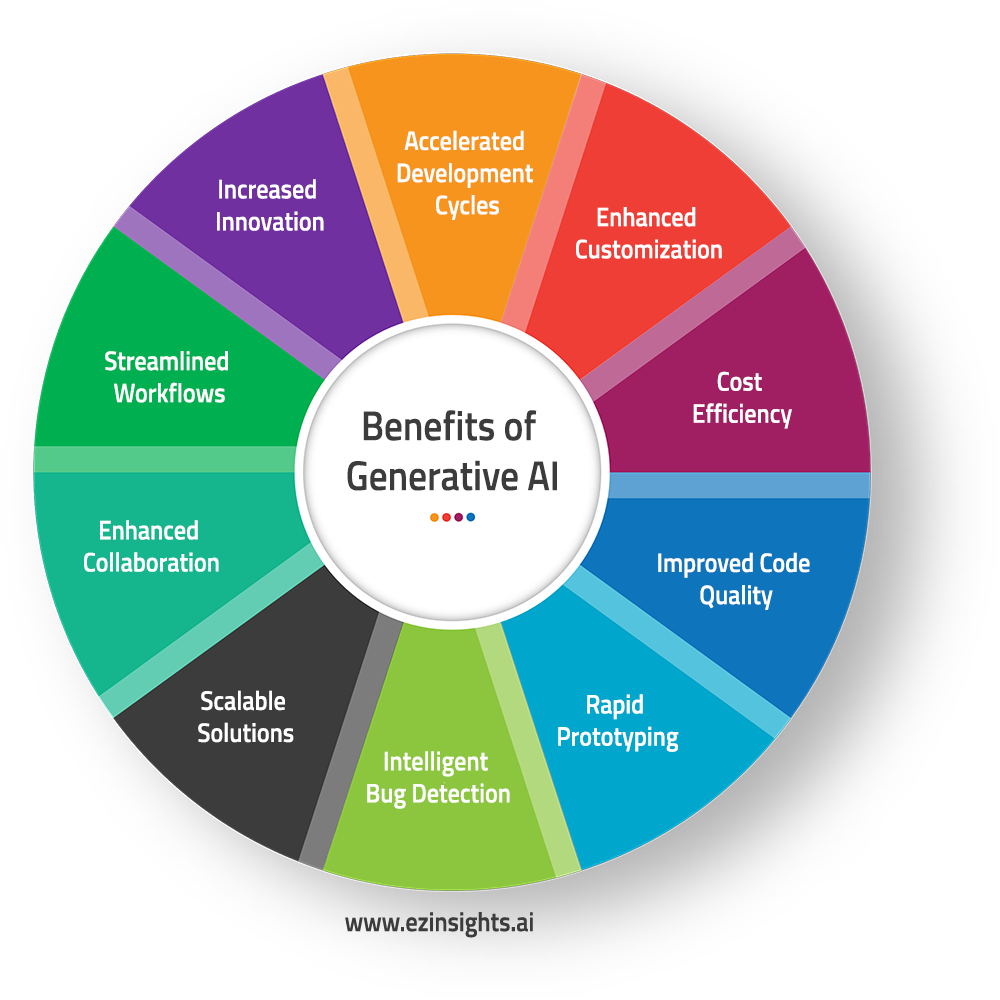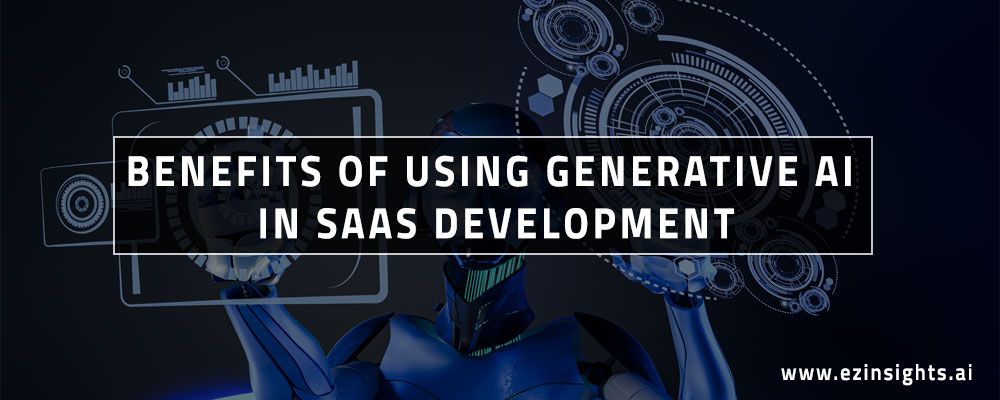The introduction and application of generative AI has significantly changed the software as a service (SaaS) sector in recent years. This ground-breaking technology has changed the way SaaS development and delivery are done by creating new opportunities for creativity, optimization, and customisation. With an emphasis on important areas including generative AI GCP, generative AI SaaS development, generative AI tools, generative AI models, and generative AI use cases, we will examine the several ways that generative AI is transforming SaaS in this post.
The Evolution of SaaS with Generative AI
A branch of artificial intelligence known as “generative AI” is dedicated to producing writing, graphics, and even software code. Generative AI uses intricate algorithms and neural networks to produce novel and distinctive results, in contrast to classical AI, which depends on established rules and datasets. The SaaS sector will be significantly impacted by this capability, which will allow businesses to provide more individualized, flexible, and dynamic solutions.
Generative AI GCP: Empowering SaaS with Google Cloud Platform
The integration of generative AI with cloud platforms such as Google Cloud Platform (GCP) is a major enabler in the SaaS arena. With the help of Generative AI GCP, SaaS developers can leverage AI’s capabilities without requiring many internal resources thanks to its sophisticated tools and reliable infrastructure.
A range of AI and machine learning services, including TensorFlow, AI Platform, and AutoML, are provided by GCP and help with the creation, training, and application of generative AI models. With the use of these services, SaaS providers may develop intelligent apps that are able to take in user input, adjust to shifting needs, and give more individualized user experiences. These AI-driven apps are appropriate for enterprise-level deployments since they can manage massive volumes of data and user requests thanks to GCP’s scalability and flexibility.
Generative AI SaaS Development: Redefining Application Creation
SaaS development is being redefined by generative AI, which automates a few steps in the application generation process. Coding, testing, and debugging are examples of time-consuming, repetitive operations that are frequently involved in traditional software development. These tasks can be automated using generative AI technologies, which will cut down on development time and effort greatly.
Generative AI, for example, can be used to produce test cases, find and resolve errors, and even produce code snippets. This improves the software’s dependability and quality while simultaneously quickening the development cycle. Furthermore, generative AI can help with content creation and UI design, which will improve the applications’ usability and engagement.
Generative AI Tools: Enhancing Productivity and Innovation
SaaS developers have access to a vast number of generative AI tools, many of which are intended to boost productivity and encourage creativity. These technologies automate a variety of processes and offer insightful data by utilizing cutting-edge algorithms and machine learning approaches.
Some popular generative AI tools include:
GPT-3:
GPT-3, a potent language model created by OpenAI, is perfect for generating chatbots, virtual assistants, and content creation since it can produce writing that appears human.
DALL-E:
DALL-E, another OpenAI innovation, can produce visuals from textual descriptions, facilitating the production of aesthetically pleasing graphics and material.
TabNine:
An AI-powered code completion tool that makes smart recommendations to help developers create code more quickly and error-free.
These tools not only make the development process more efficient, but they also free up developers to work on more creative and strategic projects, which eventually results in applications that are higher calibre and more inventive.
Generative AI Models: The Backbone of Intelligent Applications
Intelligent SaaS apps are built using generative AI models. Large volumes of data are used to train these models, and they employ sophisticated algorithms to produce outputs that are identical to content that has been authored by humans. Generative AI models come in a variety of forms, each with special qualities and uses.
Language Models:
Language models like as GPT-3 are perfect for applications like natural language processing, content production, and customer assistance because they can produce text that is both coherent and contextually relevant.
Image Models:
High-quality images can be produced from textual descriptions by image models like DALL-E, opening possibilities in industries including marketing, entertainment, and design.
Music Models:
The music and entertainment industry have new opportunities thanks to the ability of music generation models to produce creative compositions in a variety of styles and genres.
These generative AI models offer a great degree of flexibility and adaptability because they can be adjusted and tailored to match the unique requirements of various SaaS applications.
Generative AI Use Cases: Transforming Industries
Generative AI has a wide range of possible applications in the SaaS sector that might revolutionize several industries and spur innovation. Among the noteworthy applications of generative AI are:
Customer Support:
Chatbots and virtual assistants driven by generative AI may respond quickly and accurately to consumer inquiries, increasing customer happiness and cutting support expenses.
Content Creation:
Articles, reports, and marketing materials produced by AI can assist companies in keeping a constant and interesting online presence.
Personalization:
By using user behaviour and preferences to tailor experiences and suggestions, generative AI can increase consumer engagement and loyalty.
Healthcare:
Generative AI has applications in the healthcare industry that include producing medical reports, developing individualized treatment regimens, and even forecasting disease outbreaks.
Finance:
Personalized investment strategies, risk analysis, and financial report generation are all possible with generative AI.
These application cases highlight how generative AI can revolutionize several industries and help companies provide more individualized, intelligent, and effective solutions.
Benefits of Generative AI

Accelerated Development Cycles
Generative AI can automate code generation, significantly reducing development time and speeding up the overall product launch.
Enhanced Customization
AI-driven tools can create highly tailored software solutions, allowing for greater personalization to meet unique user needs.
Cost Efficiency
Automation reduces the need for extensive human resources, leading to substantial cost savings in software development.
Improved Code Quality
Generative AI ensures consistent code quality by adhering to best practices and reducing human error.
Rapid Prototyping
AI enables quick creation of prototypes, facilitating faster testing and iteration during the development phase.
Intelligent Bug Detection
AI systems can identify and fix bugs more efficiently, improving the reliability and stability of the software.
Scalable Solutions
Generative AI can easily scale development processes, accommodating growing user bases and increasing software demand.
Enhanced Collaboration
AI tools support seamless integration and collaboration among development teams, fostering better communication and productivity.
Streamlined Workflows
Generative AI automates routine tasks, accelerating workflows and enabling teams to focus on more strategic and creative aspects of development.
Increased Innovation
Generative AI frees up developers from repetitive tasks, allowing them to focus on innovative features and creative solutions.
Conclusion
The SaaS sector is undergoing a transformation because to generative AI, which streamlines processes, boosts output, and makes it possible to develop more sophisticated and customized apps. Utilizing generative AI in conjunction with platforms such as GCP offers the infrastructure and resources required to fully realize the potential of this technology. We may anticipate many more cutting-edge use cases and applications as generative AI develops further, which will completely change how SaaS development and delivery are done in the future.
With terms like “generative AI GCP,” “generative AI SaaS development,” “generative AI tools,” “generative AI models,” and “generative AI use cases,” this article emphasizes the significant influence of generative AI on the SaaS sector and provides guidance on how companies can use this technology to stand-in innovation and maintain competitiveness.
FAQs
How can I incorporate generative AI into SaaS?
There are three methods by which it can be accomplished:
– Allowing AI systems to access your SaaS data
– Integrating third-party AI services without granting them access to your data
– Using your data to train an AI model.
How can one monetise the usage of Gen AI in SaaS?
The several ways through which one can monetise usage of Gen Ai in SaaS are as follows:
– By levying a Subscription based pricing
– By charging a price as per usage
– By charging extra for certain features on existing plans
– By offering customised license agreements for businesses requiring tailored AI solutions.
How much does it cost to integrate Generative AI into SaaS?
The cost of integrating generative AI into SaaS varies depending on which integration method is selected. The quickest and least expensive option is to integrate a third-party AI service without allowing it access to your data; this can run you several hundred dollars per month. The more expensive option is to allow the AI service access to your data lakes, warehouses, documents, etc.; this can run you several thousand dollars per month.

Anupama Desai
President & CEO
Anupama has more than 23 years of experience as business leader and as an advocate for improving the life of the business users. Anupama has been very active in bringing business perspective in the technology enabled world. Her passion is to leverage information and data insights for better business performance by empowering people within the organization. Currently, Anupama leads Winnovation to build world class Business Intelligence application platform and her aim is to provide data insights to each and every person within an organization at lowest possible cost.

